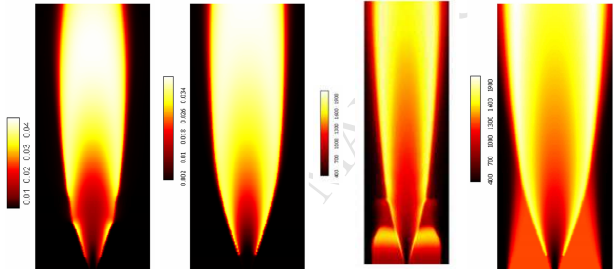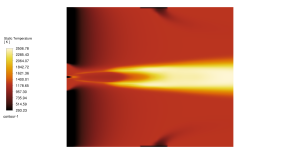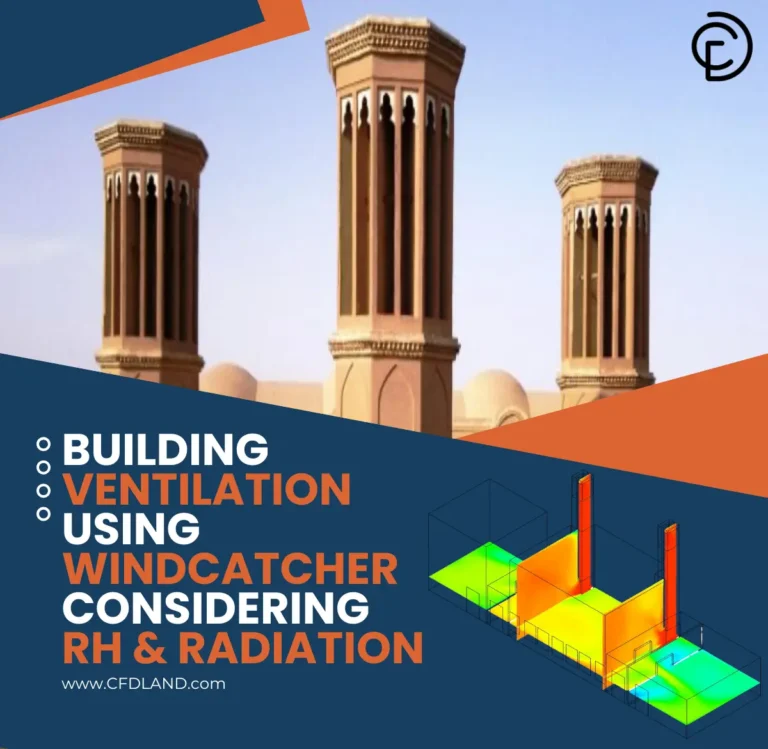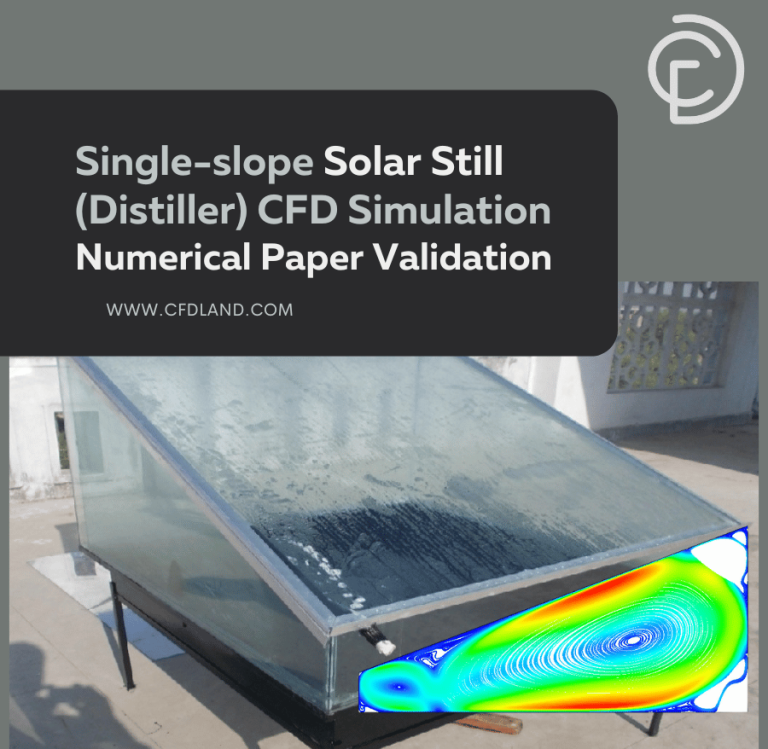Methane-air Combustion CFD, A Fluent Tutorial Using the GRI Chemkin Mechanism with 177 Reactions
Methane-air Combustion CFD, A Fluent Tutorial Using the GRI Chemkin Mechanism with 177 Reactions
- Upon ordering this product, you will be provided with a geometry file, a mesh file, and an in-depth Training Video that offers a step-by-step training on the simulation process.
- For any more inquiries regarding the product, please do not hesitate to reach out to us at info@CFDLAND.com or through our online support assistant.
€240 Original price was: €240.€135Current price is: €135.
Methane combustion is the primary chemical reaction in the burning of natural gas, making it one of the most important processes for global energy production, industrial heating, and domestic applications. While the basic reaction is well-known, achieving high efficiency while minimizing the production of harmful pollutants like Nitrogen Oxides (NOx) and Carbon Monoxide (CO) presents a significant engineering challenge. The key to overcoming this challenge lies in understanding the complex Reaction Kinetics CFD, which involves hundreds of intermediate chemical reactions and short-lived species that govern flame behavior and emissions.
This is precisely where a Methane-air Combustion CFD simulation becomes an essential tool. It allows engineers to look inside a flame, analyze temperature distributions, and track chemical species that are impossible to measure experimentally. This project details a high-fidelity Methane-air Combustion CFD Simulation using ANSYS Fluent. To achieve a high degree of chemical accuracy, we utilize the detailed GRI Chemkin CFD mechanism, which incorporates a comprehensive library of 177 elementary reactions. The methodology and results are benchmarked against the findings in the reference paper by Jozaalizadeh et al., “Numerical investigation behavior of reacting flow for flameless oxidation technology…” [1].
- Reference paper [1]: Jozaalizadeh, Toomaj, and Davood Toghraie. “Numerical investigation behavior of reacting flow for flameless oxidation technology of MILD combustion: Effect of fluctuating temperature of inlet co-flow.” Energy178 (2019): 530-537.

Figure 1: Time average contours of CO and Temperature from the reference paper by Jozaalizadeh et al. [1].
Simulation Process: Methane-air Combustion Fluent Simulation
The first step in the simulation process was creating the 2D rectangular combustion chamber geometry using ANSYS Design Modeler. Following this, a high-quality structured mesh was generated, consisting of 70,191 cells. This mesh density is crucial for accurately resolving the sharp gradients in temperature and species concentration that occur across the flame front. The core of the simulation was configured within ANSYS Fluent. To model the complex chemical reactions, the Species Transport model was activated. This model solves a conservation equation for every chemical species involved in the combustion process. The most critical part of the setup was importing the detailed chemical mechanism. Instead of using a simplified, built-in model, we used Fluent’s CHEMKIN mechanism import feature. This allowed us to load the entire GRI Chemkin mechanism directly into the solver. This is the key to a high-fidelity Chemkin Fluent simulation, as it ensures that all 177 reactions and associated species are accounted for, providing a complete and accurate description of the methane-air chemistry.
Post-processing: CFD Analysis of Flame Structure and Pollutant Formation Chemistry
The temperature contour in Figure 2 provides a clear picture of the thermal energy release from the combustion. The simulation reveals a distinct jet-flame structure, with the highest temperatures concentrated in the core reaction zone. The simulation predicts a peak flame temperature of approximately 2506K. This intense heat is generated in the regions where methane and air are mixing at the optimal ratio for combustion (the stoichiometric ratio), leading to the most vigorous exothermic reactions. The smooth temperature gradient from this hot core to the cooler surrounding regions shows how heat diffuses and is transported away from the flame, a critical factor in any thermal system design. This detailed thermal map is a primary output of a successful Methane-air Combustion CFD Simulation.

Figure 2: Temperature contour from the Methane-air Combustion CFD analysis, showing the high-temperature flame core.
Figure 3, which shows the net reaction rate of the hydroxyl (OH) radical, offers a deeper insight into the flame’s chemical structure. OH is a highly reactive, short-lived species that serves as an excellent marker for the primary combustion zone. The contour shows a narrow band where the OH reaction rate is extremely high, peaking at 1.03-1.20 kg/(m³·s). This band perfectly identifies the flame front. Analyzing OH is also crucial for Pollutant Formation CFD, as OH radicals play a central role in the chemical pathways that lead to the formation of thermal NOx. The ability of this detailed Chemkin Fluent model to map out regions of OH production (yellow) and consumption (darker red) allows engineers to understand not just where the flame is, but also where pollutant formation is most likely to occur, providing invaluable data for designing cleaner, more efficient combustors.

Figure 3: OH radical net reaction rate from the Chemkin Fluent simulation, highlighting the active flame front.
We pride ourselves on presenting unique products at CFDLAND. We stand out for our scientific rigor and validity. Our products are not based on guesswork or theoretical assumptions like many others. Instead, most of our products are validated using experimental or numerical data from valued scientific journals. Even if direct validation isn’t possible, we build our models and assumptions on the latest research, typically using reference articles to approximate reality.
Yes, we’ll be here . If you have trouble loading files, having technical problems, or have any questions about how to use our products, our technical support team is here to help.
You can load geometry and mesh files, as well as case and data files, using any version of ANSYS Fluent.
€150 Original price was: €150.€125Current price is: €125.

€130 Original price was: €130.€115Current price is: €115.

€195 Original price was: €195.€145Current price is: €145.

€360 Original price was: €360.€185Current price is: €185.

€245 Original price was: €245.€185Current price is: €185.

€240 Original price was: €240.€135Current price is: €135.
























Reviews
There are no reviews yet.